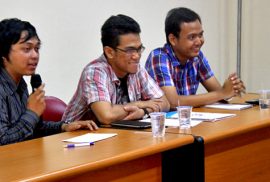The Strategy of Cambodian Government within Rice Production
by Arif Rahman Hakim
Southeast Asia region is famous for its abundant rice production. To be specific, there are some country in this region that becoming the largest rice producer, Thailand and Vietnam. Meanwhile, although some countries are also producers of rice, not the least of which still rely on imports as well, such as Indonesia, Malaysia and the Philippines. Some reasons for these countries to import partly because of the rapid population growth and climate change which caused the uncertainty of rice production. Meanwhile in Cambodia, rice production is very large and the needs of other countries will be an opportunity Cambodian rice market. Nevertheless, these opportunities have not been able to put as a good opportunity by Cambodia because it is hampered by factors of price and quality to compete with Thailand and Vietnam. The price of rice in Cambodia is more expensive because of the traditional production process (cost of milling). Therefore, the farmers are exporting rice in the raw form into Thailand and Vietnam. Ironically, when these products arrive in those countries, which are then milled there with modern equipments, the result will be referred as Thailand’s or Vietnam’s rice. This is the reason that caused rice from Cambodia to be less desirable, because if you rely on the whole process of the country, the resulting quality is not comparable with the quality of processed Thailand and Vietnam. Plus, consumer has their own tastes include varieties, aroma, price and level of damage.
To overcome these problems, the Cambodian government has a solution which outlined in the rectangular strategy. The strategy is divided into three main areas, production, logistics and collecting. In the field of production, consist; promote the use of seed varieties and modern agricultural techniques; improve national irrigation; build and manage rural roads; Promoting agricultural credit; reduce the price of electricity to the village; support the establishment of farmer organizations; land use policy to promote sustainable agriculture. In collecting area there are; support for private sector participation in processing and export of rice; provide financial assistance; support and foster the business of milling; and building a bank for rural development; reduce electricity rates in rural. In the last area of rectangular strategy, there is a logistic which concern in Improve trade facilitation, reducing the illegal cost and reduces illegal check point; impose a single stop service for export activities; establish standardized Cambodian rice; improve port facilities and reduce storage costs.
read more










